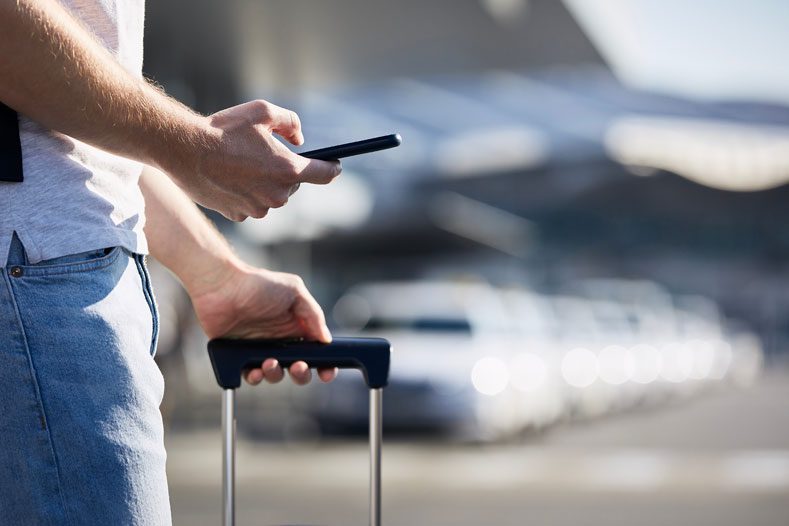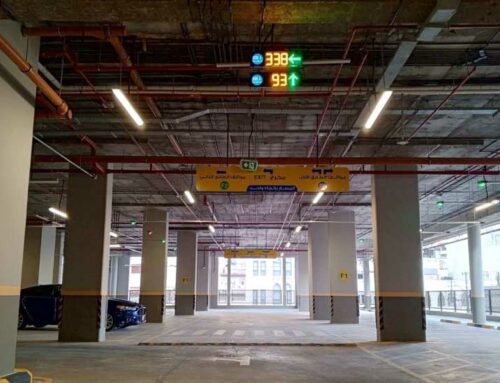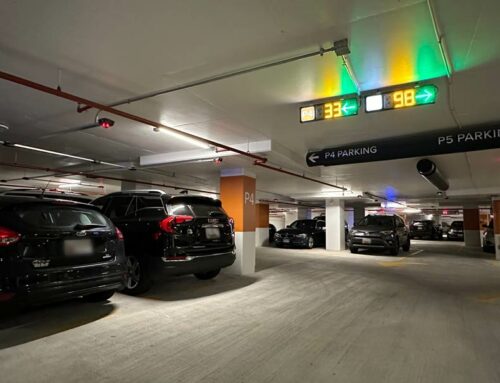Air travel can be stressful—long lines, security checks, tight connections. The last thing passengers need is another challenge in the parking lot. Unfortunately, airport parking can often be just that. Airports are among the most complex environments to manage efficiently. With thousands of spaces, multiple lots, and constantly changing passenger volumes, airports need intelligent solutions to help drivers find parking quickly and smoothly—without letting the parking experience ruin the trip before it begins.
That’s where Parking Guidance Systems (PGS) come in.
How Can Parking Guidance Help?
A Parking Guidance System uses a combination of sensors, signage, and sometimes cameras to monitor space availability in real time and guide drivers to open spots. The goal is simple: reduce the time it takes to park, eliminate unnecessary circling, and improve the overall travel experience.
In an airport setting, these benefits are magnified. Passengers are often under time pressure, unfamiliar with the layout, or hauling luggage—anything that speeds up the parking process adds immediate value.
The ROI of Smarter Parking
Modern PGS systems deliver tangible benefits for both airports and travelers:
- Reduced Circulation Time: When tight schedules meet the endless search for a parking space, the result is frustrated passengers, missed flights, and a poor start to the journey. PGS can cut parking time by up to 40%, reducing both driver stress and vehicle emissions.
- Higher Occupancy and Revenue: Real-time data enables airports to optimize the use of premium spaces, implement dynamic pricing, and improve utilization—turning parking into a revenue-generating asset while enhancing the driver experience.
- Operational Efficiency: Staff no longer need to manually check space availability or manage misparked vehicles, freeing them to focus on higher-value tasks.
Indoor and Outdoor Solutions
Airports typically combine structured garages with open-air lots. ParkHelp offers four distinct systems to fit every environment:
-
Ultrasonic Indoor Sensors: Installed above each space, these sensors detect vehicle presence and integrate with RGB LED lights to indicate availability instantly.
-
Camera-Based Indoor Systems: A single unit can monitor multiple spaces, combining license plate recognition (LPR) and LED guidance for enhanced accuracy and security.
-
Wireless Ground Sensors for Outdoor Lots: Installed in each bay, these rugged sensors detect occupancy in real time and work in any weather.
-
Camera-Based Outdoor Systems: Mounted on poles, these systems scan rows of spaces and send real-time occupancy data to digital signage and mobile apps for driver guidance.
Case in Point: Leading Airports Going Smart
Many major international airports have already invested in Parking Guidance. ParkHelp has installed systems at 19 airports worldwide, managing over 75,000 parking spaces. Many of these clients have returned to expand their systems—because at airports, effective parking guidance is essential to a smooth, satisfying parking and travel experience.
Looking Ahead: The Connected Curb
As mobility continues to evolve, airports are looking beyond traditional parking guidance. Integrated curbside management, EV charging infrastructure, and reservation systems are becoming part of the airport ecosystem. Today’s PGS is laying the groundwork for tomorrow’s smart, connected airport.



